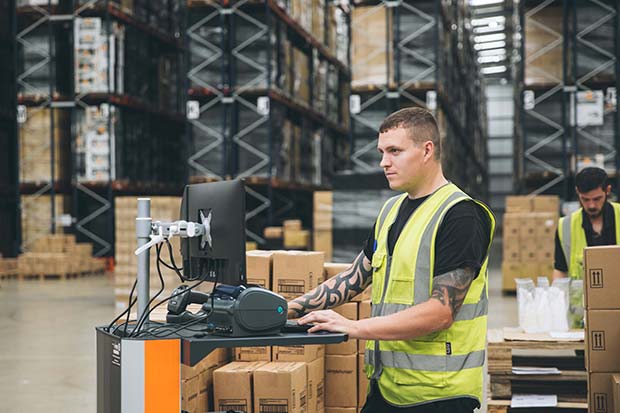The Covid-19 crisis has already revealed the true spirit of human inventiveness as many businesses have adjusted their game plans overnight – whether introducing direct to consumer e-commerce or new lines to meet changing demand.
 For many this is going to be a permanent change, with the need to switch suppliers, invest in automation, reinforce online operations and identify risk mitigation strategies, according to Tony Dobson, CEO of WMS provider SnapFulfil.
For many this is going to be a permanent change, with the need to switch suppliers, invest in automation, reinforce online operations and identify risk mitigation strategies, according to Tony Dobson, CEO of WMS provider SnapFulfil.
By SnapFulfil’s CEO, UK & Europe, Tony Dobson: The global impact of Covid-19 is going to be felt for years, long after the virus has been brought under control, with governments and economies struggling to get back on their feet.
But what this crisis has already revealed is the true spirit of human inventiveness as many businesses have adjusted their game plans overnight – whether introducing direct to consumer e-commerce or new lines to meet changing demand.
At the heart of this is advanced cloud-based WMS technology, such as SnapFulfil, that is key to ensuring the smooth flow in and out of goods, even when having staff on the ground is compromised due to sickness and there is a need to stockpile products.
Here are five ways WMS can maintain efficiency and reduce the pressure of stockpiling:
1. Location, Location, Location: WMS automates your putaway process and helps you to identify the best ‘location’ to store your goods based on the frequency items will be picked and whether they have special storage requirements.
2. Pick Planning: A WMS like SnapFulfil will use data from the day’s orders to generate electronic ‘pick lists’ based on product locations. A pick list will offer pickers the most efficient routes to take, which can improve efficiency and productivity by up to 30 per cent.
3. First In, First Out: By using the first in first out principles, a WMS will manage stock rotations based on a product’s shelf life, reducing waste and making sure products are as fresh as possible for your customers.
4. Quality Control: A cloud-based WMS brings control to a warehouse, which can be a complex and chaotic environment. It removes piles of paperwork by automating processes, helping to maintain efficiency and identify any issues within the warehouse.
5. Realtime Data: Data is a key feature of WMS, giving you access to a plethora of reports and trend analysis. These reports allow you to make better forecasting decisions based on solid fact and paint a detailed picture of a product’s lifecycle across the supply chain.
In Summary:
While we are all absorbed by Covid-19, investing in a WMS might seem the furthest thought from your mind. But now is the ideal time, as downtime is the best time to get your warehouse in order.
It’s possible to have a cloud-based WMS, such as SnapFulfil, up and running remotely in 45 days or less and it’s not expensive to set in motion, or difficult to realign across multiple locations.
With our unique low cost monthly payments, including equipment lease, the financial barriers are lifted giving you the opportunity to have a world class WMS with no major capital investment.




Comments are closed.